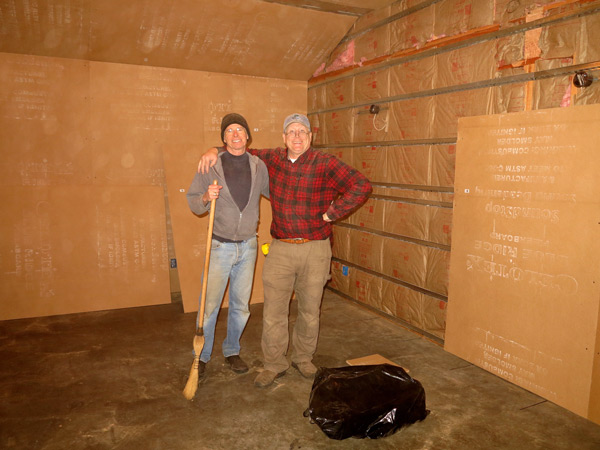
By the time we had finished the house tour and admired the quiet beauty of the fir-canopied neighborhood, we sensed that we would follow our hearts from unsafe and increasingly unaffordable East Oakland, CA to the serene hamlet of Port Townsend, WA. We also knew, given the house’s layout, that the only suitable place for my reference/review system and my husband David’s vocal practice would be in the 22′ x 22′ detached garage (below).
In consultation with, first, Acoustic Analyst Bob Hodas, and then retailer Brian Berdan of Pasadena-based Audio Element and John Quick of dCS (whose company has consulted with Berdan on its own listening room), we began to design the room. First up was addressing the garage’s square dimensions, which were anathema to good sound. Brian suggested that we build an entry hallway/storage area that would alter the room’s geometry. It wouldn’t achieve the highly touted Golden Ratio, but it was certainly a step in the right direction.
While Golden-Ratio proportions indicated that lowering the ceiling would further improve sonics, I felt doing so would leave me feeling sealed in, and large full-range speakers begging for space. Hence, we compromised with a 16′ x 20′ listening room with symmetrically insulated walls, a ceiling that begins a diagonal rise on both sides before flattening out at around 9′, and anticipated application of acoustic treatment.
Soundproofing was essential. After spending a decade living right next to music-blasting drug dealers, we did not wish to become known as the dreaded Oakland émigrés whose three noisy terriers terrorized their neighbors while Mahler blasted through their walls. Despite a few recommendations for Quiet Rock, we found its price too high. Besides, Brian had tried it, and frowned upon its sound.
Eventually, we settled upon a multi-decker sandwich of insulation, resilient channel, air, SoundStop, and gypsum wallboard. Special care was taken to ensure that walls and ceiling, save the floor and sliding door to the entrance hallway, contained the same materials. That door came about after Brian observed that the sliding door between Audio Element’s sound room and adjacent hallway enabled him to adjust pressure in the room and fine tune bass extension and response.
